How To Increase Oxygen Levels In Blood: 9 Easy, Natural Tips
Eating a balanced diet, staying active, and more ways to boost your oxygen levels.

Image: Shutterstock
Do you often feel fatigued? Do tiredness and exhaustion make your life tough? One of the best ways to reverse this situation is to increase the oxygen levels in your blood. Your body needs adequate oxygen levels for a number of biological functions. Some of the most important functions being, increasing air and blood flow through the internal organs and blood vessels. Low blood oxygen levels not only make you tired and fatigued but can also cause headaches, breathing issues, irregular heartbeat, and may impact your overall sense of coordination. And so, it is important that you maintain the required oxygen levels in your blood. But how to increase oxygen levels in the blood? That is what this post is all about. Read on to know more!
In This Article
How To Increase Oxygen Level In Blood
If you are wondering how to increase oxygen levels in the blood, there are numerous extensive medical procedures like hyperbaric oxygen therapy, positive airway pressure, pulmonary rehabilitation, and supplemental oxygen. However, it is not necessary to spend a lot of money on them. You can easily increase your oxygen levels by making some simple lifestyle changes and adopting healthier habits.
1. Exercise

The most basic thing you can do if you want to know how to increase oxygen levels in the blood is exercise. To ensure your blood is infused with oxygen, you need to work out regularly. When you work out, the cells in the body burn oxygen faster than the regular rate (1). As the carbon dioxide levels in the body increase, your brain increases the respiration rate to get more supply of oxygen. Your respiratory system and cardiovascular health are at peak performance during aerobic exercise to intake more oxygen. It has been observed that people with COPD (a lung disease that makes breathing difficult) and resultant low oxygen saturation may enhance their blood oxygen levels by performing exercises to increase lung capacity (2).
Aim for at least 30 minutes of moderate exercise or activities like brisk walking, jogging, cycling, and swimming most days of the week.
Note: If you are a beginner, start slow and listen to your body, as overexertion during exercise can lead to injury. If you have underlying health conditions like asthma and heart disease, always consult a healthcare provider before starting a new exercise routine.
 Did You Know?
Did You Know?2. Antioxidants
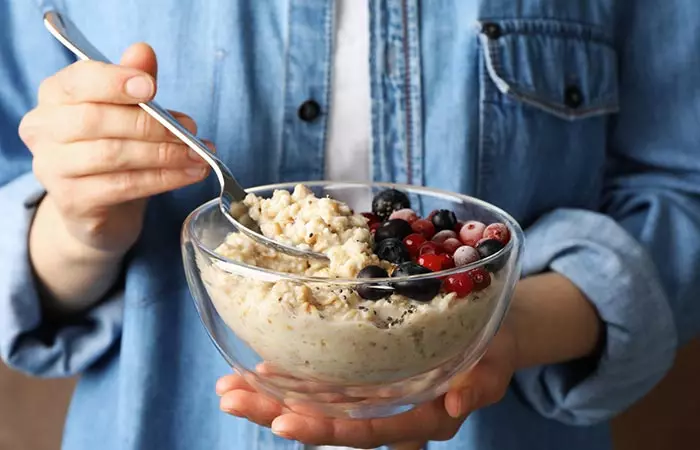
When you consume foods replete with antioxidants, your body can use oxygen in a better way. They help neutralize free radicals that can damage blood cells and vessels that carry oxygen throughout the body. This, in turn, may help improve overall circulation and oxygen delivery. Certain vitamins, including vitamins E and C, have proven antioxidant properties (3).

You may eat foods like cranberries, blueberries, red kidney beans, and dark leafy vegetables to enhance your intake of antioxidants. You may include these foods in your diet throughout the day. For instance, add a handful of blueberries or cranberries to your morning oatmeal, yogurt, or smoothie. Similarly, toss red kidney beans into salads or grain bowls for lunch or dinner.
Note: Even natural foods can cause allergic reactions in some individuals. Therefore, always start slowly when introducing new foods into your diet to monitor how your body responds. If you experience any signs of an allergic reaction, such as itching, swelling, difficulty breathing, or digestive discomfort, discontinue use and consult with a healthcare provider.
3. Improvement In Posture
You may not have thought about posture and its link with enhanced oxygen in the blood, but they are actually linked (4)! When you stand, walk or sit in a slouched posture, it hinders the breathing process to an extent. As a result, you end up taking in less amount of oxygen. Sitting or walking with an erect back and straightened posture enables more oxygen to be inhaled, and that can enter the bloodstream as well. If you have a habit of slouching, use phone alerts or sticky note reminders to remind yourself to check your posture throughout the day. You may also wear a posture alignment belt after consulting your doctor.
4. Evading CO2 And Carbon Monoxide
Try to avoid areas and regions where the concentration of carbon monoxide and similar gases is higher. This is because carbon monoxide binds to hemoglobin in your blood, reducing the amount of oxygen your body can transport (5).
It is hard to find such areas in urban regions though. Nevertheless, try to avoid roads where traffic congestion is more.
If you have to travel, try doing so during off-peak hours to reduce exposure to high traffic congestion and vehicle emissions. It is also a great idea to use weather apps or Air Quality Index websites to check pollution levels before planning outdoor activities.
5. Getting Fresh Air

For anyone wondering how to increase oxygen levels in the blood, this is the easiest solution. When you spend more time in regions where pollution is less and fresh air is available, your bloodstream gets a large supply of oxygen. You may plant trees and shrubs in your garden as they soak in CO2 and release oxygen into the atmosphere. You may also resort to jogging or a morning walk by the riverside, a park or green areas where air is fresher to take in more oxygen through breathing. Ensure the rooms in your house are properly ventilated as well. You may also use air purifiers and keep windows closed during high-pollution days.
6. Eating Foods With Essential Fatty Acids
Eating foods containing the essential fatty acids are beneficial in many ways (6). Consuming oxygen-rich foods as part of your regular diet is ideal if you want to increase the amount of oxygen in the bloodstream. Foods with compounds like alpha-linolenici An omega-3 fatty acid derived from plants, such as flaxseed oil and walnut oil. It also shares characteristics with fatty acids in fish oil. acid and Linolenic acidi One of the essential omega-3 fatty acids that may reduce inflammation and prevent the development of several chronic diseases. are very useful in this regard. Research also found that omega-3 fatty acids help increase nitric oxide levels, which relaxes blood vessels and improves blood flow. This, in turn, offers better oxygen transport (7).
You should eat plenty of soybeans, flaxseeds, and walnuts. You may also incorporate omega-3-rich fish like salmon, mackerel, sardines, and trout into meals a few times a week. If you find it hard to get enough omega-3s from food alone, consider taking high-quality fish oil supplements after consulting with a doctor.
7. Resorting To Deep Breathing

When you want to take in more oxygen, resort to deep breathing exercises. The deeper you breathe, the more air (and oxygen) you draw in, filling your lungs more efficiently.
Apart from enabling more oxygen to enter your lungs and get into the bloodstream eventually, slow and deep breathing methods also help in stress reduction (8).
You may try different deep breathing techniques. One of them is the 4-7-8 breathing. To perform it, simply inhale for 4 seconds, hold for 7 seconds, and slowly exhale for 8 seconds. Repeat this for 4-6 rounds. Alternatively, you may focus on your natural breath, paying attention to the rise and fall of your chest. As you breathe, try to lengthen your exhale slightly, allowing more oxygen to flow out and encouraging deeper breaths.
8. Quitting Drugs, Alcohol And Smoking

Research indicates that smoking cessation leads to improved lung function and reduces the risk of respiratory diseases (9).
Further, research has shown drinking alcohol can increase one’s susceptibility to pulmonary diseases. Heavy drinkers are more susceptible to pneumonia, tuberculosis, and acute respiratory distress syndrome (ARDS) (10). By avoiding smoking and alcohol consumption, you can ensure your bloodstream is infused with the required level of oxygen. Needless to say, discarding such habits is beneficial to your overall health.
You can use nicotine patches or gum to ease withdrawal symptoms when you quit smoking. To quit drinking, establish a clear limit for alcohol intake or decide to go alcohol-free for a certain period to assess how it affects your health and energy levels. If needed, consider joining a support group or seeking professional counseling to quit smoking and drinking.
 Did You Know?
Did You Know?9. Oxygen Therapy
Oxygen therapy is a medical treatment that involves administration of oxygen at higher concentrations than what is found in the ambient air. Its aim is to increase oxygen levels in the blood. It is commonly used to treat individuals with chronic obstructive pulmonary disease (COPD) and pneumonia. During oxygen therapy, patients wear a nasal cannula or a mask that delivers purified oxygen. The therapy helps improve oxygen saturation in the bloodstream and ensures vital organs receive adequate oxygen (11).
A survey of 16,818 participants aimed at determining the accuracy of oxygen saturation and how pulse oximetry readings may vary with different ethnicities. The cohort study included White (81.2%), Asian (11.7%), Black (4.0%), and other (3.2%) ethnicities and ran for 4 years from 2017 to 2025. The result showed that pulse oximetry overestimated O2 saturation in patients of Black ethnicity with the difference being 8.7% vs. 6.1% of Black vs. White subjects.
These are all the remedies and treatments you may use to increase oxygen levels in the blood. But before you use them, let us learn more about low blood oxygen levels. Scroll down to explore the symptoms linked to the condition.
Key Takeaways
- Working out regularly can increase heart and lung capacity to improve oxygen intake.
- Spend time in areas with fresh air and low pollution levels to increase oxygen supply in the bloodstream.
- Deep breathing techniques enable more oxygen to enter your lungs and bloodstream.
- Quit hazardous habits like smoking, consuming alcohol, and taking drugs to ensure enough oxygen supply in the bloodstream.
Symptoms Of Low Blood Oxygen Levels
Common symptoms of low blood oxygen levels include (12):
- Restlessness
- Elevated heart rate
- Shortness of breath
- Anxiety
- Audible noises with breathing
- Fatigue
- Dizziness
- Confusion
Just like low oxygen levels can cause several health issues, different health issues may also lead to low oxygen levels. Learning about them will help you get timely treatment and maintain proper oxygen saturation in the bloodstream. Keep reading.
Health Conditions Affecting Blood Oxygen Levels
Here is a list of health conditions that may increase the risk of low blood oxygen levels (13):
- Asthma
- Pneumonia
- Sleep apnea
- Acute respiratory distress syndrome
- Bronchitis
- Hypertension
- Obesity
- Chronic obstructive pulmonary disease
- Heart diseases
If you have any of these conditions, it is best to visit your doctor for proper treatment.
Infographic: 5 Ways To Boost Blood Oxygen Levels
Low blood oxygen levels might be why you have been feeling so tired recently. You don’t need intense treatments to regulate these levels. Out of all the remedies given above, there are some really easy lifestyle changes you can incorporate to ensure you stay healthy and active. If you want to live every day with liveliness and vigor, check out the infographic below for top 5 ways you can increase oxygen levels in the blood.
Some thing wrong with infographic shortcode. please verify shortcode syntaxWe hope now you have understood how to increase oxygen levels in the blood. Following the suggestions in the article and making small changes in your lifestyle will modulate your blood oxygen levels. This will help relieve your extreme tiredness and fatigue. For example, you can exercise and get fresh air to increase your oxygen levels. In addition, consume an antioxidant-rich balanced diet and avoid smoking or excessive alcohol intake. However, if the low blood oxygen level condition persists along with other worrying symptoms, consult your healthcare provider to diagnose any underlying medical condition.
Frequently Asked Questions
How to increase blood oxygen levels while sleeping?
Sleeping on your side, improving the indoor air quality, breathing exercises, right temperature and humidity, alleviating nose and chest congestion, can all ensure good oxygen supply while sleeping.
How to increase blood oxygen levels in elderly?
Deep breathing exercises, active lifestyle, healthy diet, staying hydrated, and quitting smoking can help the elderly attain better oxygen levels.
Does drinking water increase blood oxygen in the body?
Yes, with ample hydration your lungs stay hydrated and work to their full potential, improving the oxygen levels.
How to increase oxygen levels immediately?
Pollution-free fresh air is one of the quickest methods to increase the oxygen supply in the blood. Standing up straight instead of lying down can also increase oxygen levels by reducing the pressure on the lungs, and deep, slow breaths can increase air supply to the lungs.
Illustration: Best Ways To Increase Oxygen Levels In Blood
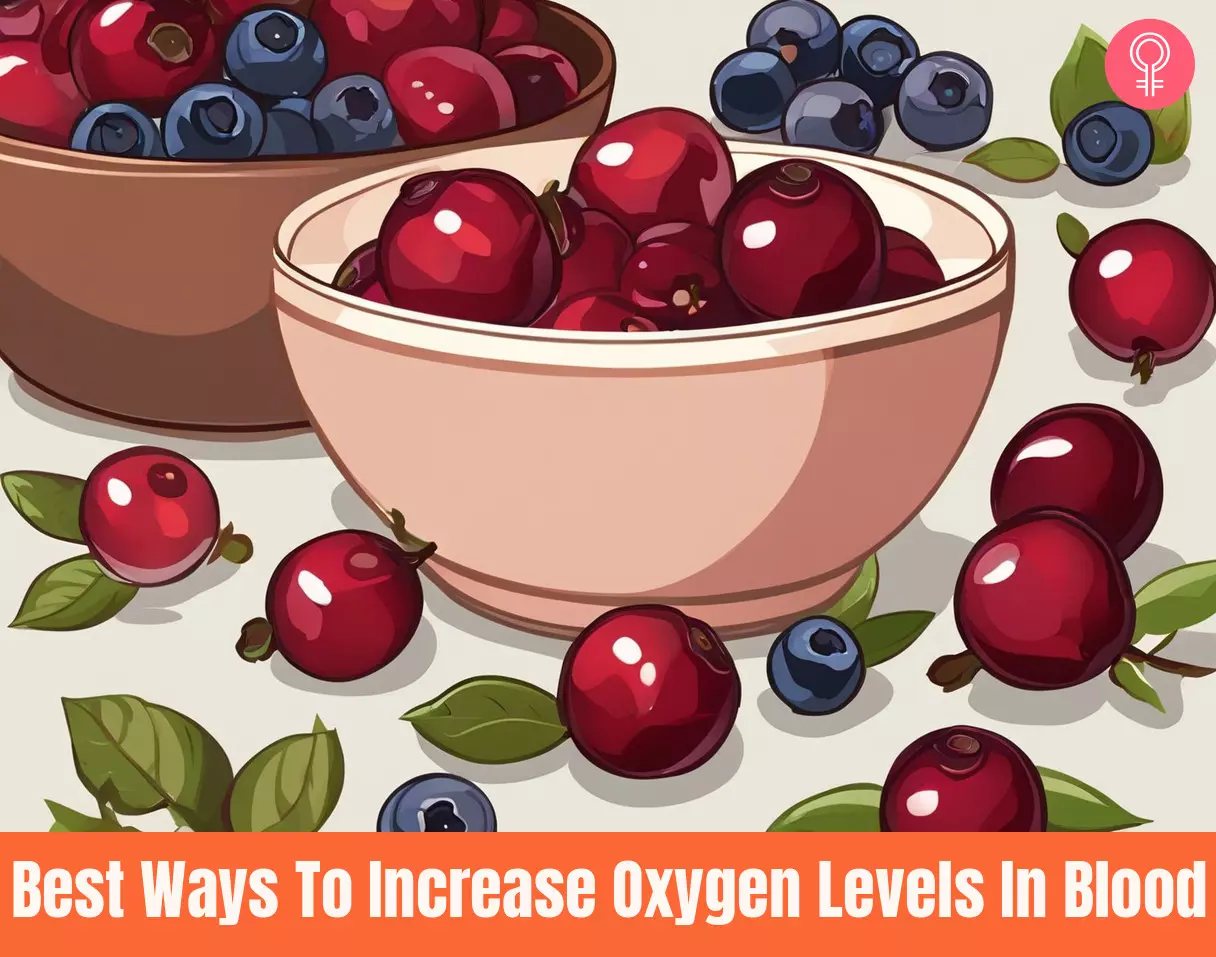
Image: Stable Diffusion/StyleCraze Design Team
Want to naturally boost oxygen levels in your blood? Check out the video below to discover 6 effective ways to enhance oxygenation.
How has this post helped you? Do tell us by commenting in the box below.
References
Articles on StyleCraze are backed by verified information from peer-reviewed and academic research papers, reputed organizations, research institutions, and medical associations to ensure accuracy and relevance. Read our editorial policy to learn more.
- The effects of intensity of exercise on excess postexercise oxygen consumption and energy expenditure in moderately trained men and women
https://pubmed.ncbi.nlm.nih.gov/8299613/ - Hypoxemia in patients with COPD: cause, effects, and disease progression
https://pmc.ncbi.nlm.nih.gov/articles/PMC3107696/ - Free radicals, antioxidants and functional foods: Impact on human health
https://pmc.ncbi.nlm.nih.gov/articles/PMC3249911/ - Body position change and its effect on hemodynamic and metabolic status
https://pubmed.ncbi.nlm.nih.gov/15454907/ - Physiology, Oxygen Transport And Carbon Dioxide Dissociation Curve
https://www.ncbi.nlm.nih.gov/books/NBK539815/ - Essential fatty acids in health and chronic disease
https://pubmed.ncbi.nlm.nih.gov/10479232/ - Examining the Influence of Omega-3 Fatty Acids on Performance, Recovery, and Injury Management for Health Optimization: A Systematic Review Focused on Military Service Members
https://pmc.ncbi.nlm.nih.gov/articles/PMC11768049/ - Slow breathing for reducing stress: The effect of extending exhale
https://pmc.ncbi.nlm.nih.gov/articles/PMC10395759/ - Outcome of Smoking Cessation on Airway Remodeling and Pulmonary Inflammation in COPD Patients
https://pmc.ncbi.nlm.nih.gov/articles/PMC4153156/ - Alcohol’s Effects on Lung Health and Immunity
https://www.ncbi.nlm.nih.gov/pmc/articles/PMC4590617/ - Oxygen Administration
https://www.ncbi.nlm.nih.gov/books/NBK551617/ - Chapter 11 Oxygen therapy
https://www.ncbi.nlm.nih.gov/books/NBK593208/ - Hypoxia
https://www.ncbi.nlm.nih.gov/books/NBK482316/
Read full bio of Nilofar Pendhari
Read full bio of Jyotsana Rao
Read full bio of Arshiya Syeda
Read full bio of Himanshi Mahajan





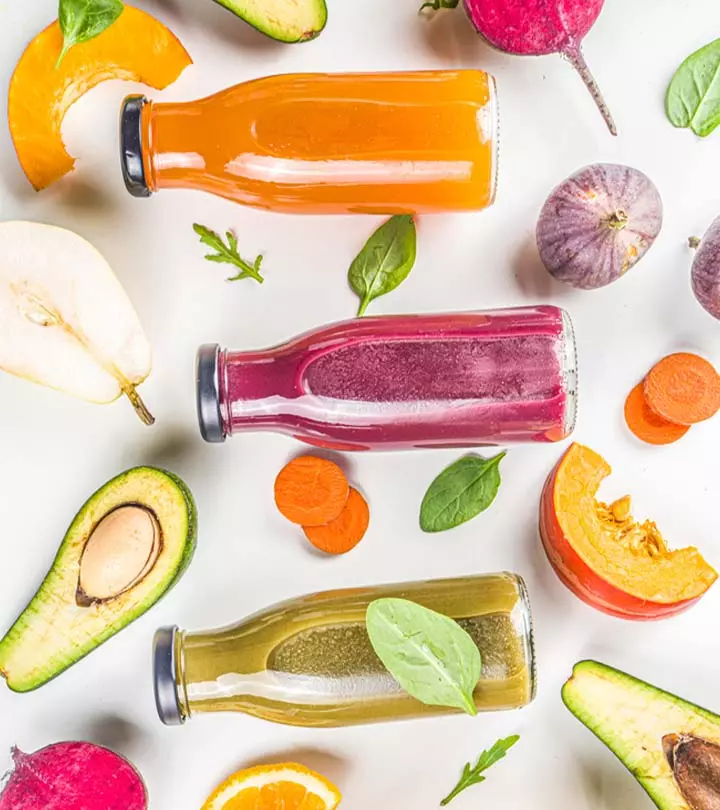












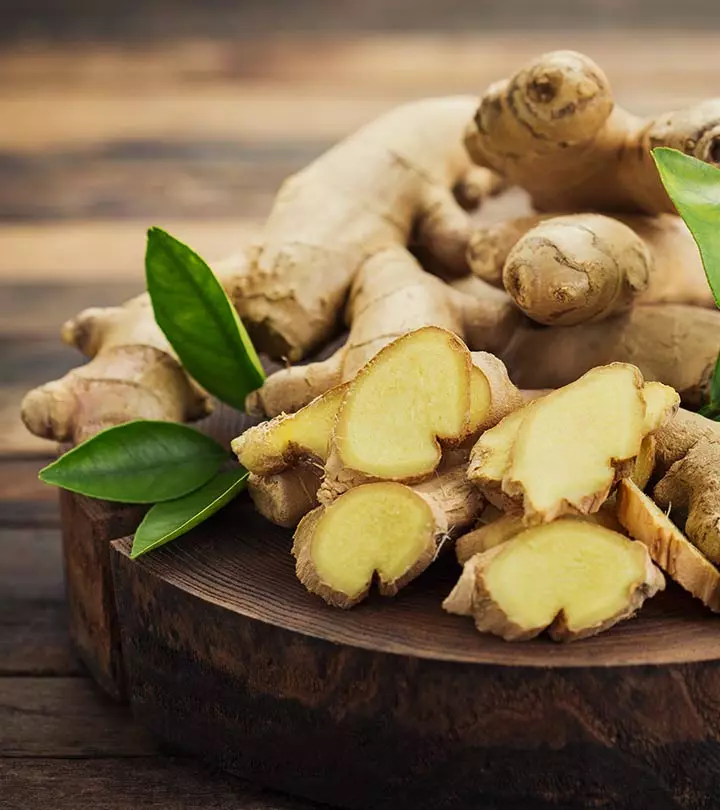

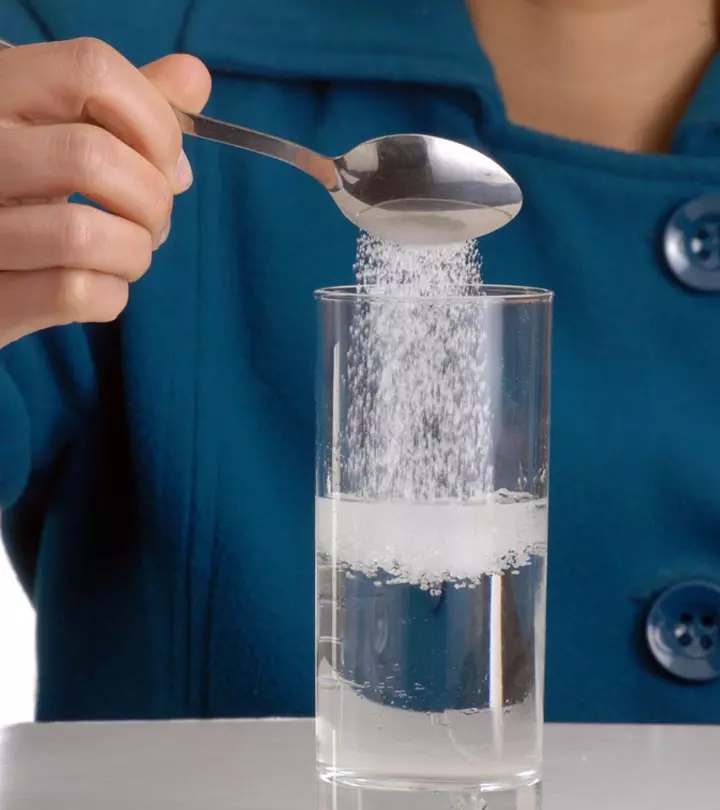

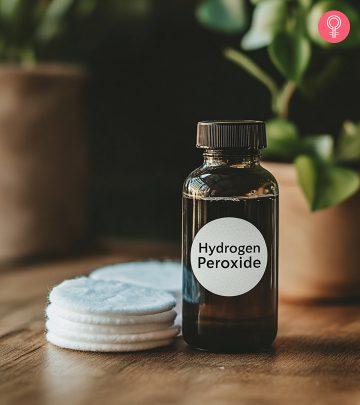



Community Experiences
Join the conversation and become a part of our empowering community! Share your stories, experiences, and insights to connect with other beauty, lifestyle, and health enthusiasts.